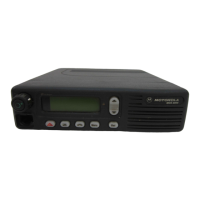148
Function Key Descriptions
F2 - ADD SYSTEM Adds a Trunking system. You cannot add a system unless a system key or
a hardware key present.
F3 - PREV SYSTEM Accesses the previous system.
F4 - NEXT SYSTEM Accesses the next system.
F5 - DELETE SYSTEM Deletes the current system. You will be prompted before the system is
actually deleted.
F6 - CHAN ASSIGN (for UHF/
VHF) or CONTROL CHAN (for
800/900 MHz)
Brings up a screen where you can change and view the control
channels for the system.
F9 - MORE OPTIONS Brings up a screen where you can configure other options for Trunking
system operation.
Field Definitions
System Use the UP/DOWN arrow keys to scroll through the available systems.
Alternatively, you can use the F3/F4 function keys to navigate through
the available systems.
System Key An FTR or System Key is required to access this field. It holds the system
key status for the current Trunking system.
System Type Use the UP/DOWN arrow keys to select the Trunking system type. If
the Trunking system is Type I, the range of the ID changes for different
size codes and the ID is a three-digit hexadecimal number. If the
Trunking System is Type II or IIi, the individual ID is a four-digit
hexadecimal number.
Each radio has a single individual ID per system, independent of the
number of talkgroups, user groups, or personalities it is affiliated to on
that system. The fields on this screen will vary for Type I and Type II/IIi
systems.
Note: If you have more than one fleet on a system, you may
want to use a Universal ID so that people calling the radio can
use a single ID.
System ID A system key or FTR key is required to access this field. This field contains
the four-digit hexadecimal number which identifies the Trunked
system.
Type I The original MOTOROLA Trunked signalling protocol.
Type II An enhanced version of the original protocol that provides
additional fleet management flexibility for a given system
via an expanded signalling format.
Type IIi A hybrid of Type I and II that permits a radio to operate as a
Type II unit on a Type I system.

